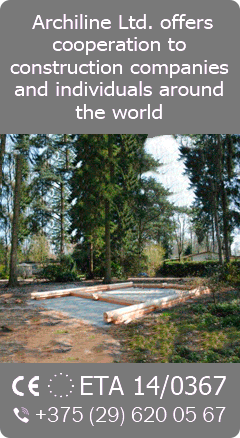≡ Menu
|
|
Physical properties of wood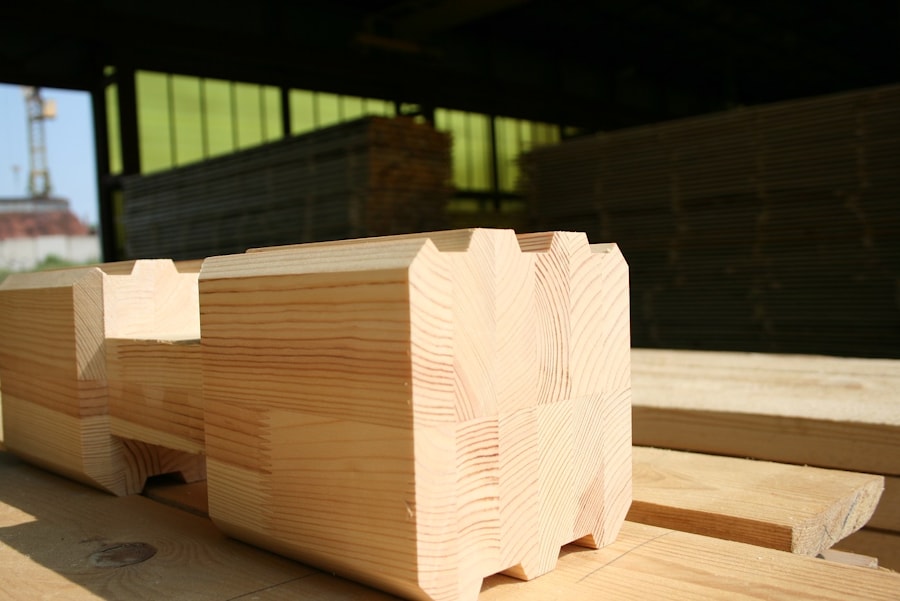
Physical properties of woodThe properties of wood found in tests that do not lead to a change in chemical composition are called physical properties.1. Appearance of wood 2. Wood moisture and properties associated with its change 3. Thermal properties 4. Electrical properties 5. Sound properties 6. Properties of wood, which appear under the influence of electromagnetic radiation 1. Appearance of woodIt is characterized by the following properties: color, gloss, texture and macrostructure. Under the color of wood is understood a certain visual sensation, which depends, in the main, on the spectral composition of the light flux reflected by it.Color - one of the most important characteristics of the appearance of wood. It is taken into account when choosing rocks for interior decoration of premises, making furniture, musical instruments, art crafts, etc. The color of wood depends on the breed, the age of the tree, the climate of the area of growth. Wood can change color when exposed to the influence of air and light, with damage by fungi, as well as during prolonged exposure to water. Nevertheless, the color of many breeds is so characteristic that it can serve as one of the signs when they are recognized. Glitter is the ability of the wood to reflect the light stream in a direct way. The greatest shine from domestic breeds differs wood of an oak, a beech, a white acacia, a velvet tree; from foreign - wood of satin wood and mahogany (mahogany). Texture is a pattern formed on the surface of wood due to the cutting of anatomical elements (annual layers, core rays, vessels). To assess the quality of wood in appearance use features such as the width of annual layers and the content of late wood. The width of the annual layers is the number of layers per 1 cm of the section measured along the radial direction on the end surface of the sample. The content of late wood is determined by the ratio (in percent) between the total width of the zones of late wood and the total length (in the radial direction) of the measurement site, which includes an integer number of layers. 2. Wood moisture and properties associated with its changeTo measure the water content in the wood, the indicator called humidity is used. The moisture content of wood is the percentage of the mass of water to dry wood mass: W = (m - m0) / m0 * 100, where m - is the initial mass of the sample of wood, g, and m0 - is the mass of the sample of dry wood, g. Humidity measurement is carried out by direct or indirect methods.Direct methods are based on the allocation in one way or another of water from wood, for example by drying. These methods are simple, reliable and accurate, but they have a disadvantage - quite a long procedure. This disadvantage is lacking in indirect methods based on measuring other physical properties that depend on the water content of the wood. The most widely used conductometric electric moisture meters, measuring the electrical conductivity of wood. However, these methods also have their drawbacks: they give reliable indications in the range from 7 to 30% and only at the point of introduction of needle contacts. There are two forms of water contained in wood: bound and free. The bound water is in the cell walls, and the free water is contained in the cell cavities and intercellular spaces. The bound water is retained mainly by physico-chemical bonds, the change in its content significantly affects most properties of wood. Free water, held only by mechanical bonds, is removed more easily than bound water, and has less influence on the properties of wood. When tested to determine the parameters of the physical and mechanical properties of wood, it is conditioned, leading to normalized humidity. If there are no special notes, then the figure is 12%. In practice, according to the degree of humidity, wood is distinguished: Wet, W> 100%, for a long time in water; Freshly cut, W = 50-100%, preserving the moisture of the growing tree; air-dry, W = 15-20%, held in the open air; room-dry, W = 8-12%, a long time in a heated room; absolutely dry, W = 0, dried at a temperature of t = 103 ± 2 ° C. Shrinkage. Reducing the linear dimensions and volume of wood when removing bound water from it is called shrinkage. Removing free water does not cause shrinkage. The more cell walls in a unit of wood volume, the more bound water in it and the higher the shrinkage. Wood shrinkage is not the same in different directions: in the tangential direction, it is 1.5 to 2 times greater than in the radial direction. Under full shrinkage, or maximum shrinkage Bmax is understood to reduce the linear dimensions and volume of wood when removing the entire amount of bound water. The formula for calculating total shrinkage,%, is: Bmax = (amax-amin) / amax * 100, where amax and amin are the size (volume) of the sample, respectively, at a humidity equal to or higher than the saturation limit of the cell walls and in an absolutely dry state, mm (mm3). The total linear shrinkage of the most common domestic breeds in the tangential direction is 8-10%, radial 3-7%, and along the fibers 0.1-0.3%. The total volumetric shrinkage is in the range of 11-17%. Wood shrinkage is taken into account when sawing logs on boards (allowances for shrinkage), when drying sawn timber, etc. Internal stresses occur in the wood without the participation of external loads. They are formed as a result of uneven changes in body volume during drying - drying stresses, impregnation and in the process of tree growth. Total drying voltage is convenient as a combination of two components - humidity and residual stresses. Humidity stresses are caused by inhomogeneous material shrinkage. In the surface areas of the board, where the humidity is lower than in the center, stretching stresses arise from the constraint of free shrinkage, and compressive stresses appear inside the board. Residual stresses are caused by the appearance in the wood of inhomogeneous residual deformations. Residual stresses, unlike humidities, do not disappear when the moisture is leveled in the board and are observed both during drying and after its complete completion. If the tensile stresses reach the tensile strength of the wood across the fibers, cracks appear. So there are surface cracks at the beginning of drying and internal at the end of drying. The crushing. The change in the shape of lumber and blanks during drying, as well as sawing and improper storage is called wobbling. Most of the warping occurs because of distinguishing shrinkage in different structural directions. There are transverse and longitudinal distortion. Longitudinal warping happens: it happens along the edge, along the plate and the winged nature. The ability of wood due to its hygroscopicity to absorb moisture (vapors of water) from the surrounding air is called moisture absorption. The moisture absorption is practically independent of the rock. The ability to absorb moisture is a negative property of wood. Dry wood, placed in a very humid environment, is strongly moistened, which worsens its physical and mechanical properties, reduces biostability, etc. To protect wood from the influence of moist air, the surface of wooden parts and products is covered with various paint and varnish and film materials. Swelling. Increasing the linear dimensions and volume of wood with increasing the content of bound water in it is called swelling. Swelling occurs when the wood is exposed to humid air or water. This is a property opposite to shrinkage, and obeys, basically, the same laws. The total swelling,%, is calculated by the formula: amax = (amax-amin) / amin * 100, where amax and amin are the size (volume) of the sample, respectively, at a humidity equal to or higher than the saturation limit of the cell walls, and in absolutely dry condition, mm (mm3). Just like shrinkage, the greatest swelling of wood is observed in the tangential direction across the fibers, and the smallest - along the fibers. Swelling is a negative property of wood, but in some cases it benefits, providing density of joints (in barrels, vats, ships, etc.). Water absorption. The ability of wood to increase its moisture by direct contact with droplet liquid water is called water absorption. The maximum moisture that reaches the water immersed in water, is composed of the limiting amount of bound water and the largest amount of free water. Obviously, the amount of free water depends on the volume of cavities in the wood, therefore, the greater the density of wood. The less is its moisture, characterizing the maximum water absorption. The ability of wood to absorb water, as well as other liquids, is important in the processes of cooking wood for the production of cellulose, when impregnating it with solutions of antiseptics and antipyrins, with timber alloys and in other cases. Density. This property is characterized by the mass of a unit volume of material, and has a dimension in kg / m3 or g / cm3. a) The density of the wood material is pdv, g / cm, i.е. the density of the material of the cell walls is equal to: pd. = m.d. / vd.V., where m.d. and v.d. - respectively, the mass, g, and volume, cm3, of the wood substance. This figure is equal for all breeds of 1.53 g / cm3, since the chemical composition of the cell walls of wood is the same. b) The density of absolutely dry wood p0 is equal to: p0 = m0 / v0, where m0, v0 are the mass and volume of wood at W = 0%, respectively. The density of wood is less than the density of the woody substance, since it includes voids (cell cavities and intercellular spaces filled with air). The relative volume of cavities filled with air characterizes the porosity of the wood P: P = (v0 - vd) / v0 * 100, where v0 and vd. - respectively, the volume of the sample and the wood substance contained in it at W = 0%. The porosity of wood varies between 40 and 80%. c) Density of wet wood: pw = mw / vw, where mw and vw are the mass and volume of wood, respectively, at W. The density of the wood depends on its moisture content. At a moisture content of W <Wn, the density varies insignificantly, and with an increase in moisture content above Wn, a considerable increase in the density of wood is observed. d) Partial humidity of wood p`w characterizes the dry wood content in a unit of wet wood volume: p`w = m0 / vw, where m0 is the mass of absolutely dry wood, g or kg; vw - volume, cm3 or m3, wood at a given humidity W. e) The basis density of wood is expressed by the ratio of the mass of an absolutely dry sample m0 to its volume at a humidity equal to or higher than the saturation limit of the cell walls Vmax: pB = m0 / vmax. This main indicator of density, which does not depend on humidity, is widely used to assess the quality of raw materials in woodworking, the pulp and paper industry and in other cases. The density of wood varies over a very wide range. Among the species of Russia and the near abroad, Siberian fir (345), willow white (415), and the densest boxwood (1040), the pistachio kernel (1100), have very low density fir. The range of variation in the density of wood from foreign rocks is wider: from 100-130 (balsa) to 1300 (bakut). The density values here and below are given in kilograms per cubic meter (kg / m3). According to the density of wood at 12% moisture, rocks are divided into 3 groups: small (P12 <540), medium (550 <P12 <740) and high (P12> 740) wood density. Permeability characterizes the ability of wood to flow liquids or gases under pressure. The water permeability of wood along the fibers is much greater than across the fibers, while in hardwood it is several times larger than that of conifers. 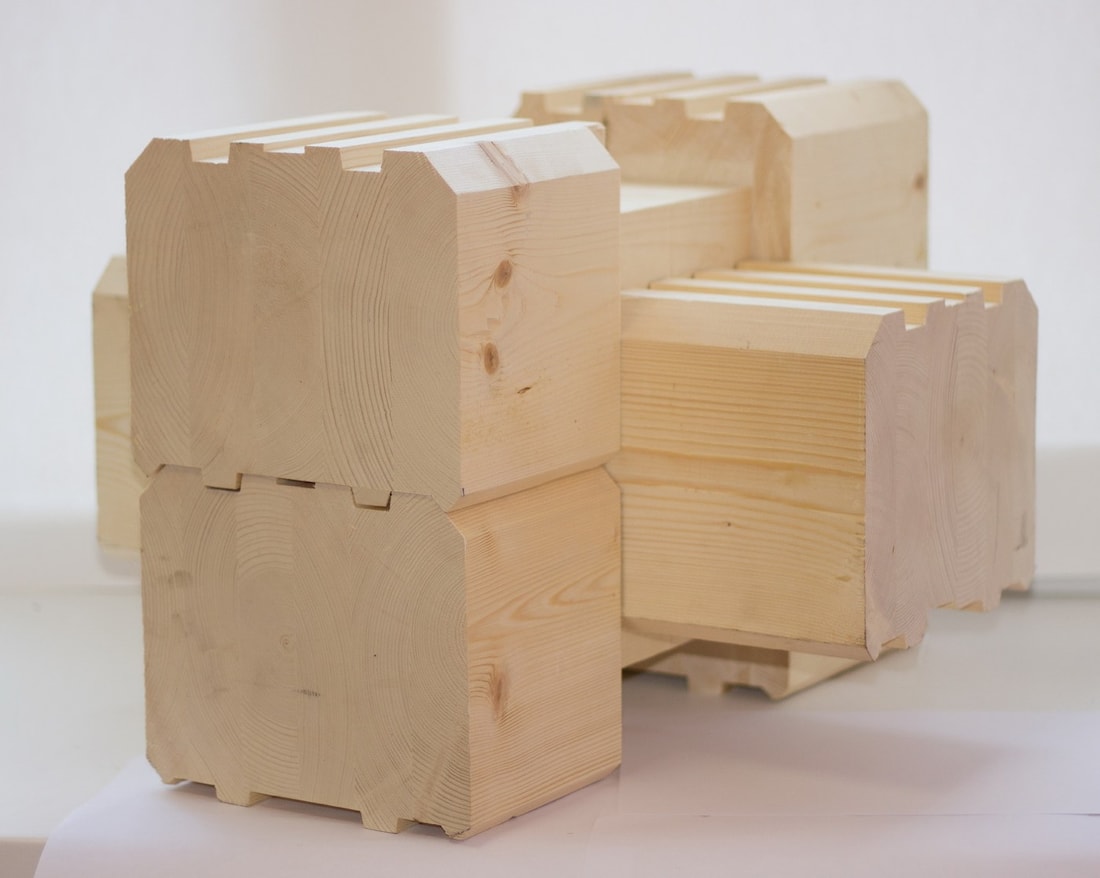
3.Heat propertiesThermal properties include heat capacity, thermal conductivity, thermal diffusivity and thermal expansion. Heat capacity. The indicator of the ability of wood to accumulate heat is the specific heat C, which is the amount of heat necessary to heat 1 kg of wood mass by 1 (0) C. The specific heat for all breeds is the same and for absolutely dry wood it is (FORMULA).With increasing humidity, the heat capacity increases. Thermal conductivity is a property that characterizes the intensity of heat transfer in a material. The coefficient of thermal conductivity (FORMULA) increases with increasing temperature, humidity and density. Along the fibers (SYMBOL) is 2 times greater than across. Thermal diffusivity characterizes the ability of wood to equalize the temperature by volume. Thermal expansion is the ability of wood to increase linear dimensions and volume when heated. The coefficient of thermal expansion of wood is 3-10 times less than that of metal, concrete, glass. 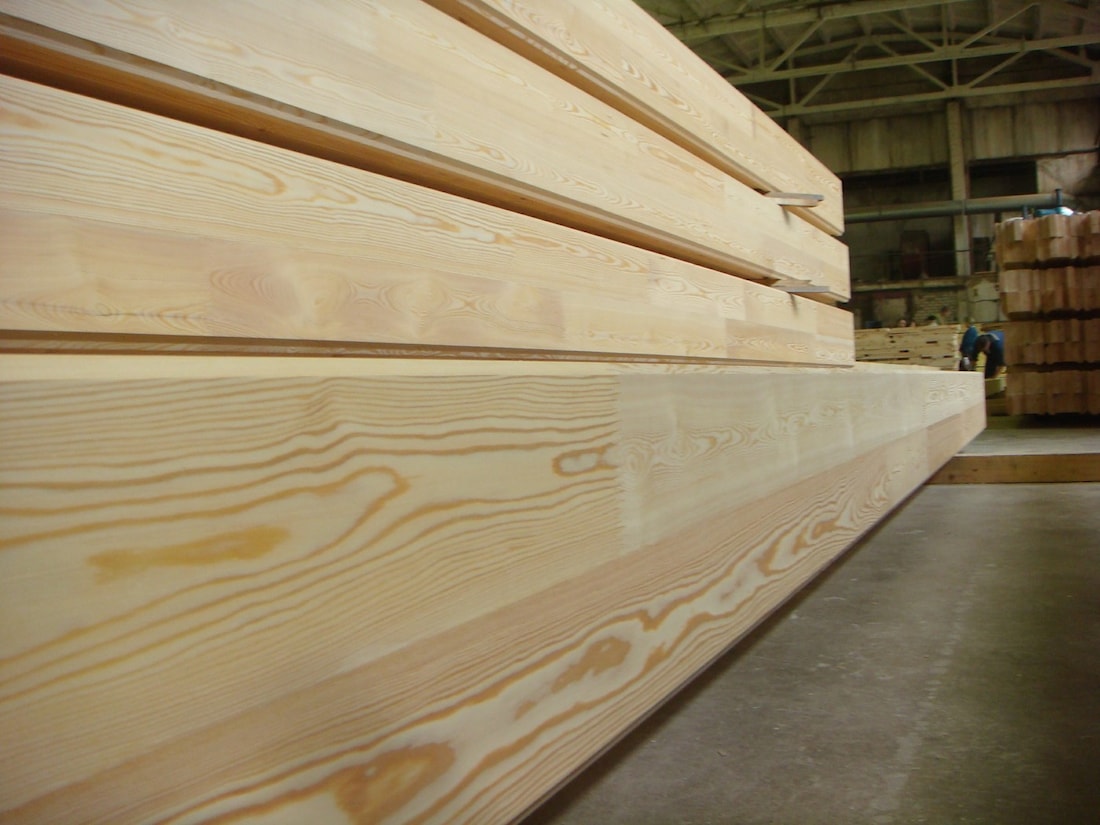
4. Electrical propertiesElectrical conductivity is the ability of wood to conduct an electric current that is inversely related to electrical resistance. Dry wood refers to dielectrics. As the moisture content of the wood increases, the resistance decreases. A particularly sharp decrease (in tens of millions of times) of resistance is observed with an increase in the bound water content.A further increase in humidity causes a drop in resistance only tens or hundreds of times. This explains the decrease in the accuracy of the determination of humidity by electrical moisture meters in the region above Wnt. Electrical strength - the ability of wood to resist breakdown, i.e. decrease in resistance at high voltages. Dielectric properties characterize the behavior of wood in an alternating electric field. Indicators: dielectric permeability and loss tangent. The dielectric constant is equal to the ratio of the capacity of the capacitor with the lining of wood to the capacitance of the capacitor with an air gap between the electrodes. This indicator for dry wood is 2-3. The tangent of the dielectric loss angle characterizes the fraction of the power supplied, which is absorbed by the wood and converted into heat. Piezoelectric properties are manifested in the fact that under the influence of mechanical forces on the surface of wood there are electric charges. 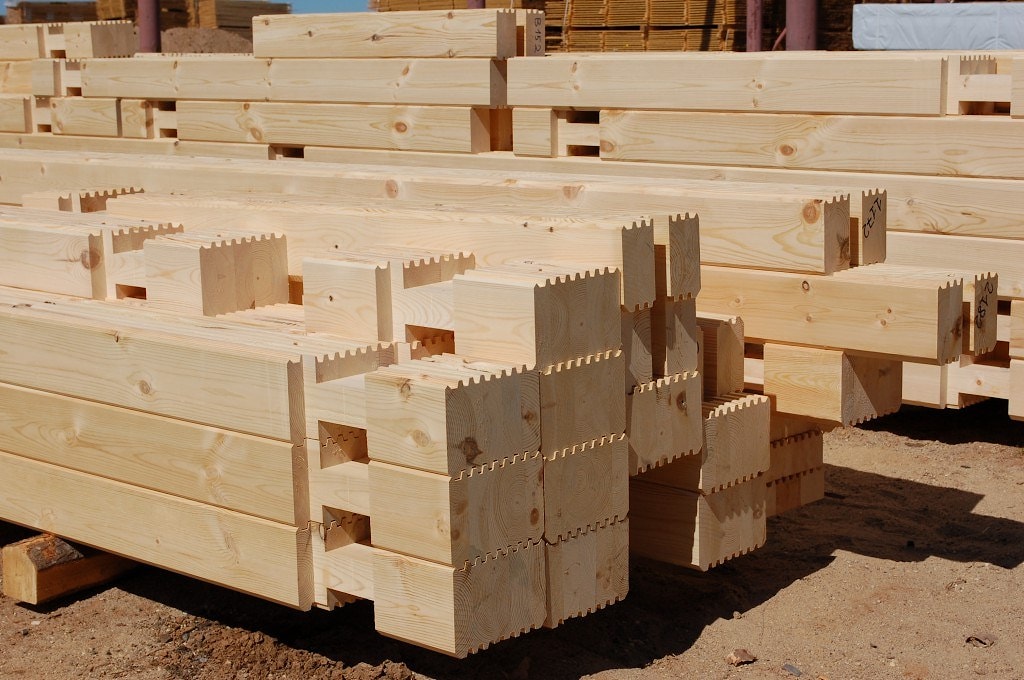
5. Sound propertiesOne of these properties is the sound conductivity, the index of which is the speed of sound. The speed of sound C, m / s, in wood can be determined by the formula: C = (E / p) ½, where E is the dynamic modulus of elasticity, N / m2; p - density of wood, kg / m3. Another important indicator characterizing the ability of wood to reflect and conduct sound is acoustic resistance, Pa * s / m: R = p * C.6. Properties of wood, manifested under the influence of electromagnetic radiationSurface areas of wood can be effectively heated by means of invisible infrared rays. Significantly deeper - up to 10-15 cm - penetrate into the wood rays of visible light. By the nature of the reflection of light rays, it is possible to assess the presence of visible wood defects. Light laser radiation burns wood and recently it is successfully used for burning out details of a complex configuration. Ultraviolet rays penetrate much worse into wood, but cause luminescence, which can be used to determine the quality of wood. X-rays are used to determine the characteristics of the fine structure of wood, the detection of hidden defects and in other cases. Of the nuclear radiations, one can note beta radiation, which is used in the densimetry of a growing tree. Much more widely used gamma radiation, which penetrate deeper into the wood and are used in determining its density, detection of rot in the mine pit, structures, etc.Look more:You can see a video-review of the wooden house “Mirage”:You can have a look on 3D-tour of the wooden house «Mirage»: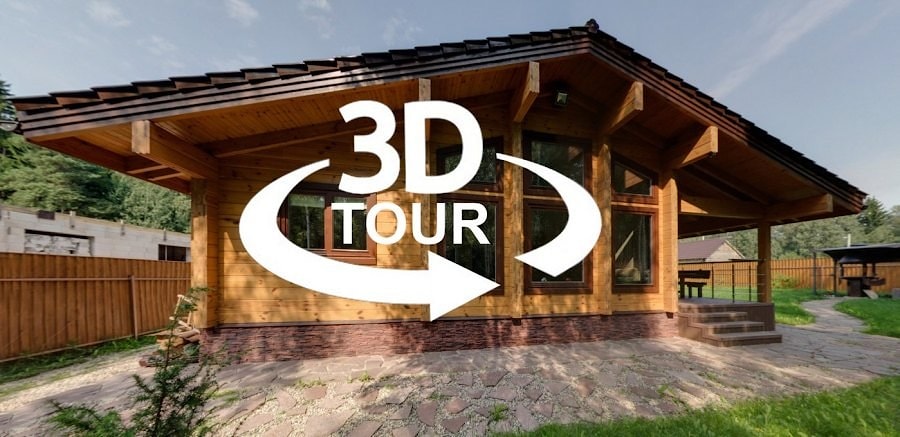
|
|
© 2024
ArchiLine Wooden Houses
114-49, Necrasov str., Minsk, Republic of Belarus, 220049
The site is powered by Nestorclub.com | |
 Good Wooden House since 2004
Good Wooden House since 2004

